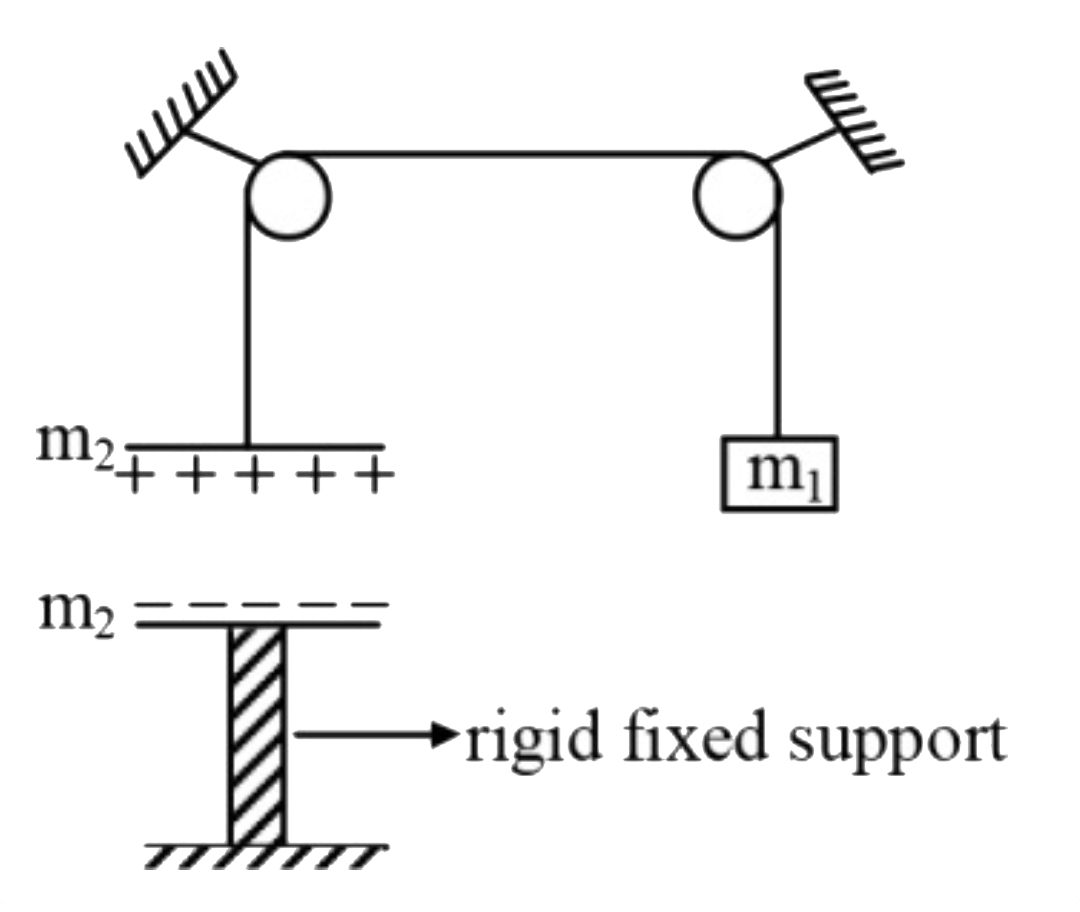In the given figure a capacitor of plate area A is charged up to charge q . The mass of each plate is m2 The lower plate is rigidly fixed. Find the value of m1 so that the system remains in equilibrium -

m2+q2ε0Ag
m2
q22ε0Ag+m2
2m2
The correct Answer is:C
Step by step video, text & image solution for In the given figure a capacitor of plate area A is charged up to charge q . The mass of each plate is m_2 The lower plate is rigidly fixed. Find the value of m_1 so that the system remains in equilibrium - by Physics experts to help you in doubts & scoring excellent marks in Class 12 exams.
Updated on:21/07/2023Topper's Solved these Questions
Similar Questions
Knowledge Check
In the given figure a capacitor of plate are A is charged upto charge q. The mass of each plate is m2. The lower plate is rigidly fixed. The value of m1 if the system remains in equilibrium is.
 .Am2+q2∈0AgBm2Cq2∈0AgD2m2
.Am2+q2∈0AgBm2Cq2∈0AgD2m2In the given figure the capacitor of plate area A is charged upto charge q. The ratio of elongations (neglect force gravity) in springs C and D at equilibrium position is.
 .Ak1k2Bk2k1Ck1k2D√k1k2
.Ak1k2Bk2k1Ck1k2D√k1k2In a parallel-plate capacitor of plate area A, plate separation d and charge Q the force of attraction between the plates is F.
AF∝Q2BF∝1ACF∝dDF∝1d
The force between the plates of a parrallel plate air capacitor , if charge on capacitor is Q and area of each palte is A , will be

View SolutionIn a parallel plate capacitor with plate area A and charge Q, the force on one plate because of the charge on the other is equal to
View SolutionA parallel plate capacitor C has a charge Q. The actual charges on its plates are
View SolutionIf the plates of a parallel plate capacitor are not equal in area then quantity of charge
View SolutionA parallel plate capacitor has a dielectric slab of dielectric constant K between its plates that covers 1/3 of the area of its plates, as shown in the figure. The total capacitance of the capacitor is C while that of the portion with dielectric in between is C1. When the capacitor is charged, the plate area covered by the dielectric gets charge Q1 and the rest of the area gets charge Q2. The electric field in the dielectric is E1 and that in the other portion is E2. Choose the correct option/options, ignoring edge effects.

View Solution

